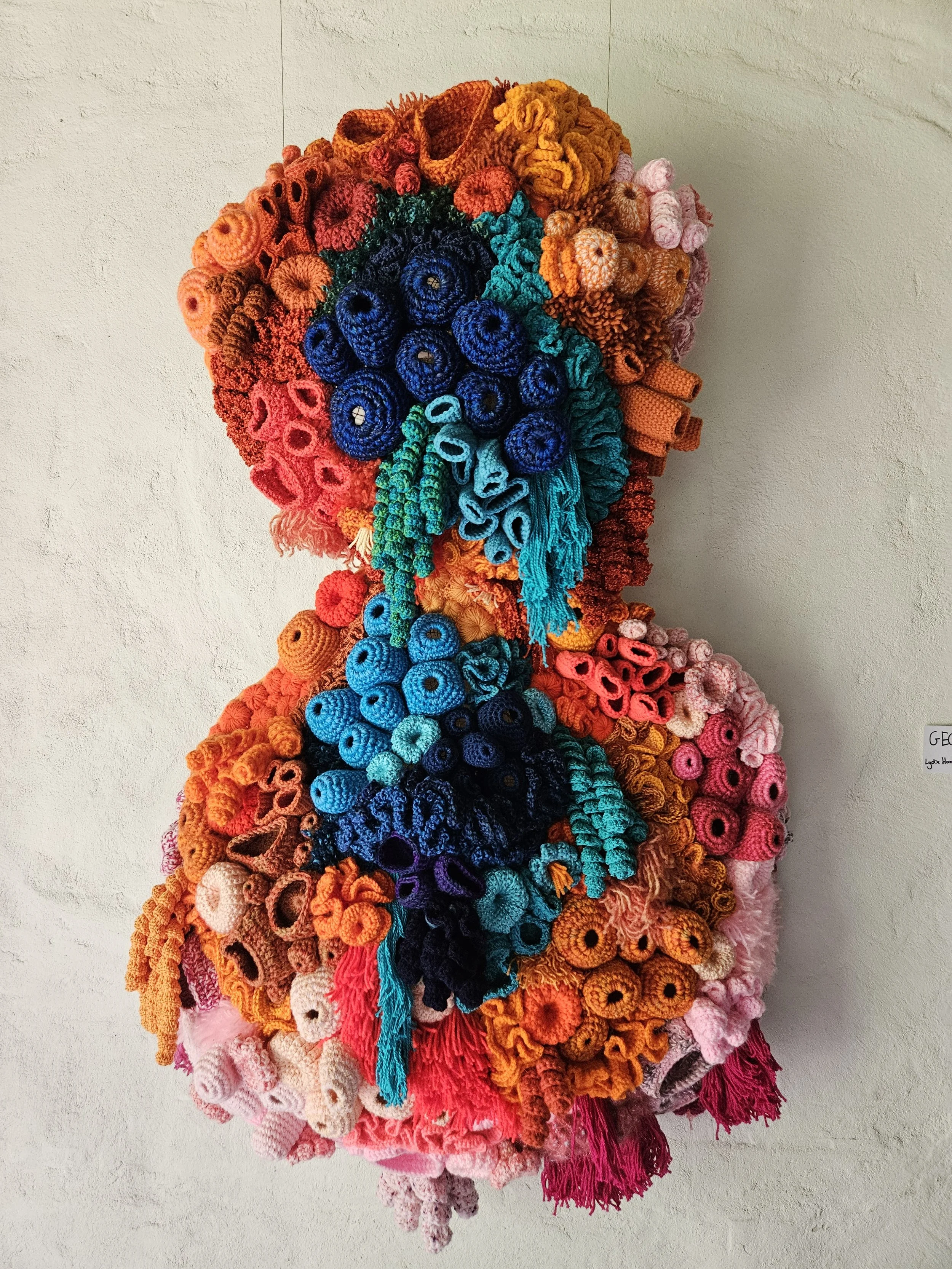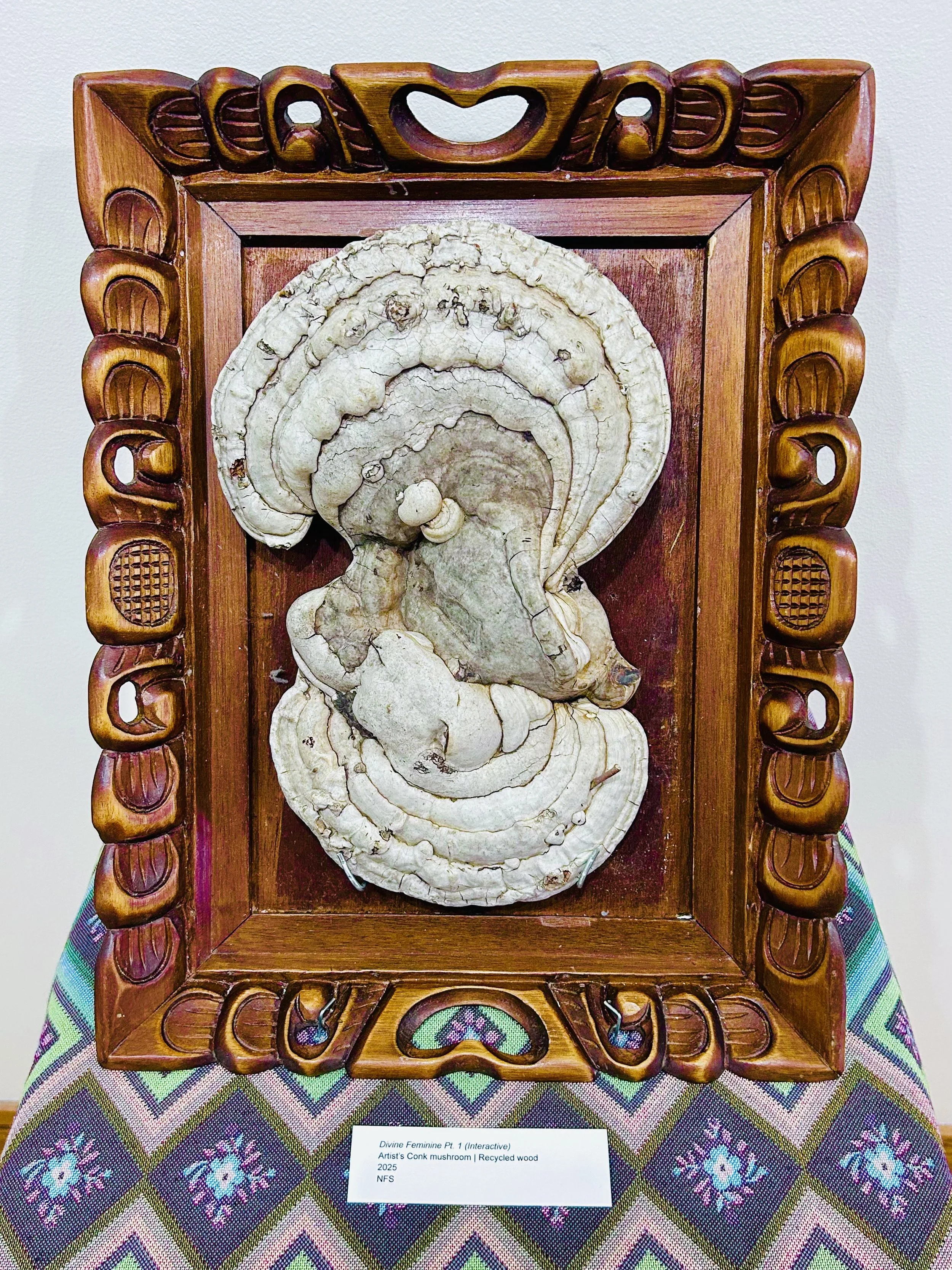
Home is where you hang your art.
Our galleries provide a glimpse into that immense pool of talent our area enjoys. Each of our two collections—professional and emerging—changes six times a year, which means at least a dozen new reasons to get excited about art every year.
Lydia Hansen & Ark
September 12 - October 31, 2025
About the Artists:
Lydia Hansen has been practicing crochet and fiber art in Southeast Minnesota for 14 years. Her work focuses on exploration of texture and color through art that invites audience interaction through touch. She’s particularly interested in how 3D qualities of crochet can be used to mimic shapes and patterns found in nature. She frequently takes inspiration from painting, woodworking, and collage to challenge conventional ideas of what crochet can be.
Exhibition statement:
There is one rule in the Sensory Sculpture Garden which must be followed at all times: Please Touch The Art!
This highly interactive fiber art series combines modern crochet techniques into an immersive art experience. A blend of fiber, techniques, and textures are used across the sculpture garden with a singular goal: art for our hands.
The sculpture garden is inspired by our tactile experiences of the world. Kinetic (hands-on) learning is essential to social, emotional, and physical development in children. Opportunities to engage with this part of our human experience vanish as we age, but tactile processing is vital to adults too, especially for kinetic learners, the visually impaired, and neurodivergent folks. The sculptures are created with these people in mind, giving them permission to engage without censoring themselves. They also invite neurotypical adults to experience art and the world in a more embodied and curious way.
Ark is an emerging multimedia artist living in rural south-central Minnesota. The singer/songwriter and live painter is devoted to uplifting marginalized artists in rural communities. Her work is inspired by the exploration of one’s inner landscape and centered around the process of transmuting pain into personal power through art and A.R.T therapy techniques such as automatic drawing, somatic journaling, and utilizing imagination to create new narratives of self. Ark’s visual work and vocal performance is fruit born from this healing journey. She is in pursuit of a master’s degree in art therapy with intent to encourage self-expression as a catalyst for self-empowerment in other bipoc artists.
Annual Members Show
November 7 - December 31, 2025
Participating Artists:
Emily Bauer
Lora Lee Bauer
Jack Faas
Cora Feist
Kandee Feist
Lisa Ganser
Sandra Haff
Kevin Hanson
Laura Helle
Sylvia Hernandez
Sonia Larson
Angie Loecke
Tammy Schneider
Abigail Swigerd
The ArtWorks Center is open Tues-Fri 10-5 and Sat 10-3Previous shows from 2014-2025 here.



